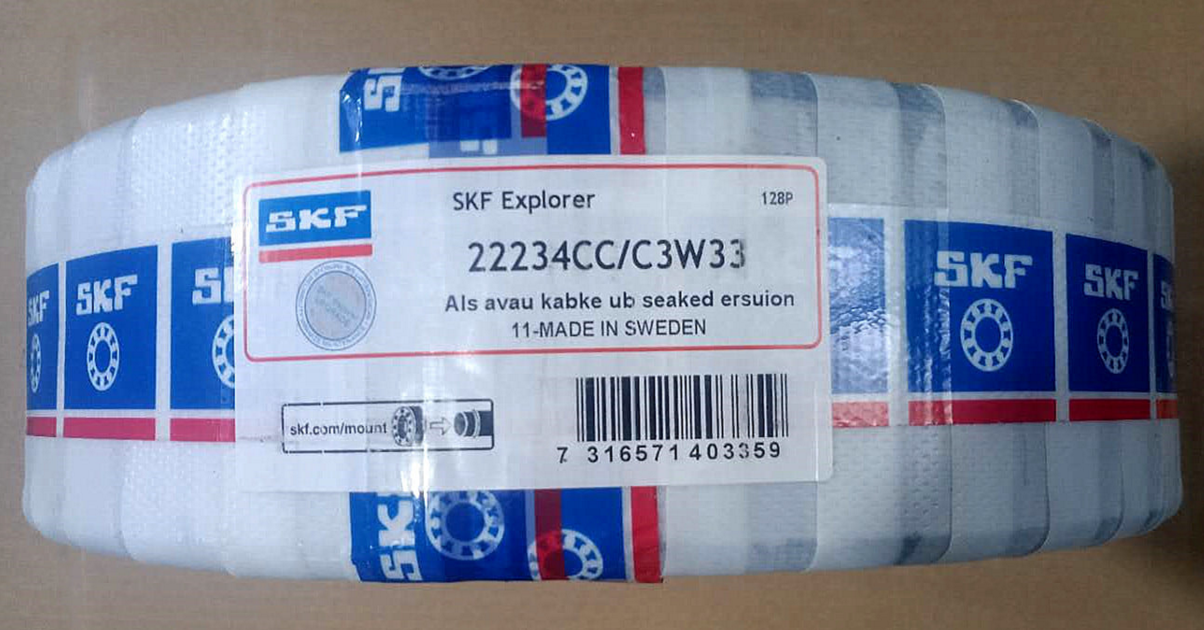
 News
NewsSKF bearings cannot be directly observed during operation. Air compressor maintenance engineers can detect bearing abnormalities through noise, vibration, temperature, lubricant consumption and other conditions. Check and analyze the cause of the failure in time to avoid greater losses. The following describes the causes of bearing failures. Most customers have taken preventive measures in advance in the maintenance instructions and feedback from maintenance engineers.
1. Bearing crack defect
There are cracks in part of the notch.
Reasons: the impact load of the main engine is too large, and the interference between the spindle and the bearing is large; there are also large peeling frictions that cause cracks; poor accuracy during installation; improper use (using a copper hammer, jamming large foreign objects) and friction cracks.
Solution: Check the conditions of use, set appropriate interference and check materials, improve installation and use methods, and check the air compressor lubricant to prevent friction cracks.
2. Metal peeling off the surface of the raceway
The running surface is peeled off. After peeling, it showed obvious unevenness.
Reason: Bearing rolling elements and inner and outer ring raceway surfaces are subjected to periodic pulsating loads, resulting in periodic contact stress. When the number of stress cycles reaches a certain value, fatigue peeling occurs on the working surfaces of the rolling elements or inner and outer ring raceways. If the bearing load is too large, this fatigue will increase. In addition, improper bearing installation and shaft bending will also cause raceway peeling.
Solution: Re-study the use conditions and select the bearing and clearance, and check the machining accuracy, installation method, lubricant and lubrication method of the shaft and bearing box.
3. Rust and corrosion
Part or all of the surface is rusted, and the rolling elements become line-shaped rust.
Reasons: poor storage conditions, improper packaging, insufficient rust inhibitors, intrusion of moisture, acid, and solvents, so directly hold the bearing by hand. The intrusion of water and corrosive substances (paint, gas, etc.). The lubricant is not suitable. Water droplets are attached due to condensation of water vapor. Stopped in high temperature and humidity. Poor rust prevention during transportation.
Solution: To prevent rusting during storage, re-oil the packaging regularly and irregularly, strengthen the sealing performance, regularly check the lubricating oil, replace the unqualified or deteriorated oil in time, and use the bearing correctly.SKF Bearing 6002 online, contact us for more information.

4. The cage is broken
The rivet is loose or broken, and the rolling element is broken.
Reasons: excessive torque load, insufficient lubrication, frequent speed changes, large vibrations, bearings installed in an inclined state, and foreign objects stuck in them.
Solution: to find out whether the conditions of use and lubrication are appropriate, pay attention to the use of bearings, and study whether the selection of the cage is appropriate and whether the rigidity of the bearing box is required for load.
5. Creep
The inner diameter surface or the outer diameter surface slips, causing the mirror surface or discoloration, and sometimes it gets stuck.
Reasons: insufficient interference at the fitting, insufficient sleeve tightening, abnormal temperature rise, excessive load on the host, etc.
Solution: Re-study whether the interference is appropriate, check the conditions of use, and check the accuracy of the shaft and bearing box.
6. Burns
The bearing heats up and discolors, and it burns and cannot rotate.
Reason: Generally, it is insufficient lubrication, the quality of the lubricating oil does not meet the requirements or deterioration, and the bearing assembly is too tight. In addition, if the clearance is too small and the load is too large (large preload), the roller is deflected.
Solution: Choose an appropriate clearance (or increase the clearance), check the type of lubricant, ensure the amount of injection, and check the conditions of use to prevent positioning errors and improve the bearing assembly method.Need SKF Bearing 29252, click here to contact us for more details.
7. Bearing indentation
Damaged state: the dent on the raceway surface or the rotating surface when small metal powders, foreign objects, etc. are bitten. Due to the impact during installation, a concave surface (Brinell hardness indentation) is formed on the pitch interval of the rolling elements.
Cause: foreign matter such as metal powder bites. The shock load received during assembly or transportation is too large.
Solution: impact shaft sleeve. Improve the sealing device. Filter the lubricating oil. Improve assembly and usage methods.
8. Bearing wear
Damage status: The so-called wear is caused by friction on the raceway surface or rolling surface, the roller end surface, the collar surface and the concave surface of the cage.
Reasons: foreign matter intrusion; development caused by rust and electric corrosion; poor lubrication; slipping due to irregular movement of rolling elements.
Solution: Improve the sealing device; clean the bearing box; fully filter the lubricating oil; check the lubricant and lubrication method.
9. Bearing discoloration
Damaged state: due to temperature rise and lubricant reaction, the raceway wheel, rolling element and cage are discolored.
Reason: poor lubrication. The reaction with the lubricant causes oil immersion in hot state. The temperature rises greatly.
Solution: Improve the lubrication method and replace the air compressor oil.
10. Bearing burns
Damaged state: The raceway wheel, rolling element and cage rapidly heat up during rotation until they are discolored, softened, welded and damaged.
Reason: poor lubrication. Excessive load (excessive preload). The speed is too high. The clearance is too small. Intrusion of water and foreign objects. The accuracy of the shaft and the bearing box is poor, and the shaft deflection is large.
Solution: Research lubricants and lubrication methods. Correct the selection of bearings. Study fit, bearing clearance and preload. Improve the sealing device. Check the accuracy of the shaft and bearing housing. Improve the installation method.
The high-quality brand bearings exported by Eric Bearing Limited are competitive in price. More than 70 countries and regions around the world will choose our products and have established long-term and stable cooperative relations with us. We look forward to your joining and working with us. Develop together.